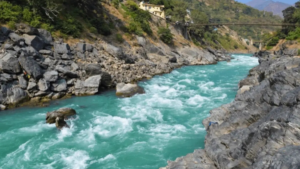Jharkhand: History of Jharkhand
Jharkhand is located in the earthen part of India. The state shares its borders with West Bengal, Chhattisgarh, Uttar Pradesh, Bihar, and Odisha. Jharkhand is the 15th largest state by area in India and the 14th largest by population. On 15th November 2000, the state of Jharkhand was formed after covering the southern half of Bihar. The area covered by Jharkhand is 79,720 Km2. The capital of Jharkhand is Ranchi and the sub-capital in Dumka. The state is well known for its waterfalls, holy places, and hills. Some popularly known religious sites are there Rajrappa, Baidyanath Dham, and Parasnath.
Jharkhand: History
- After the Independence in 1947, the rulers of the state chose to accede to the Dominion of India.
- The state of Jharkhand was first proposed by a student of St. Columbia’s college in Hazaribagh in 1912.
- In 1928, the Unnati samaj political wing of the Christian tribals Association demanded a tribal state in Eastern India after which a memorandum was submitted to Simon’s commission.
- In 1955 Jharkhand party led by Jaipal Singh Munda submitted a memorandum to the States reorganization commission for a separate Jharkhand state. However, it was rejected due to there being many languages and no link languages in the region, tribals were not in majority, and adverse effects on the economy after separation from Bihar.
- In 1972, Vinod Bihari Mahato, Shibu Soren, and A. K Roy founded the Jharkhand Mukti Morcha and Nirmal Mahato founded the All-Jharkhand Students Union, they together spare headed movement for a separate state of Jharkhand.
- There were differences in the opinion of these parties and they parted away from each other.
- Ram Ratan Ram the then Congress General Secretary urged Rahul Gandhi to pay attention to the issue at hand.
- The committee consisting of Ram Dayal Munda, B.P. Kesari, Vinod Bihari Mahato, Santosh Rana, and Suraj Singh Besara started a fresh initiative on the matter.
- The central government formed a committee on the Jharkhand matter in 1989 and its stressed the need for greater allocation of the development funds for the area.
- In December 1994 the Jharkhand Area Autonomous Council Bill passed in Bihar Legislative Assembly.
- In 1998 the separate state movement was falling apart, however, it was led by justice Lal Pingley Nath Shahdeo.
- In 1998 the union government decided to send the bill concerning the formation of the Jharkhand state to the Bihar Legislative Assembly to which Lalu Prasad Yadav said that the state would be divided over his dead body.
- The voting on Jharkhand was done on 21st September 1998 in Bihar legislation and on that day the committee under the leadership of Shahseo called for a Jharkhand bandh and organized a protest march.
- After the last assembly election in the state resulted in a hung assembly, RJD’s dependence on the Congress extended support on the precondition that RJD would not pose a hurdle to passage of the Bihar the organization bill.
- Finally, with the support of both RJD and Congress the ruling coalition at the center led by the Bharatiya Janata Party, which made statehood its mean pole plank in the region in successive poles earlier, cleared the Bihar organization bill in the monsoon session of the Parliament that year.
- Paving the way for the creation of a separate Jharkhand state comprising Chota Nagpur division and Santhal Pargana division of South Bihar.
Jharkhand: Things you need to know about
- Capital of Jharkhand is Ranchi and Sub-capital in Dumka.
- The Chief minister of Jharkhand is Hemant Soren and Governor is Ramesh Bais.
- The official language of Jharkhand is Hindi.
- The largest city of Jharkhand is Jamshedpur.
- The state flower of Jharkhand is Palash, the state bird is koel, and the state tree is Sal.









 States and Capitals - How Many States in...
States and Capitals - How Many States in...
 List of Rivers of Uttarakhand, Know the ...
List of Rivers of Uttarakhand, Know the ...
 RBI Appoints Indranil Bhattacharyya as N...
RBI Appoints Indranil Bhattacharyya as N...

